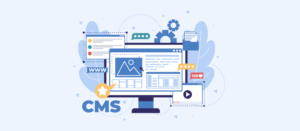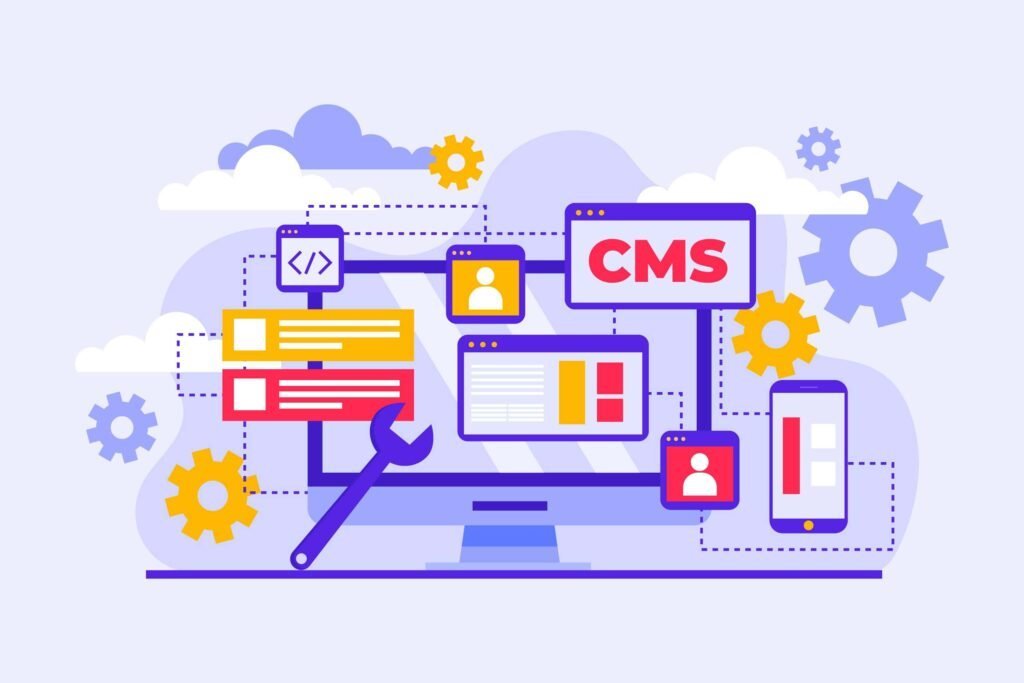Overcoming Content Challenges in Enterprise Ecommerce with Headless CMS
Introduction
To remain competitive in today’s fast changing digital market, organizations must constantly supply high-quality content to their customers. For enterprise ecommerce businesses, this challenge is particularly daunting, as they need to provide not only engaging content but also a seamless user experience across multiple channels and touchpoints.
One solution to this challenge is a headless content management system (CMS).
A headless CMS platform separates the content creation and management process from the presentation layer, enabling businesses to create, manage, and deliver content more efficiently and effectively.
What is Headless CMS?
Headless CMS is a content management system that separates the backend content management from the frontend display. It enables the management of material in a single location before delivering it to various display devices such as mobile devices, desktop computers, or digital signs.
This separation enables businesses to deliver content more consistently, quickly, and efficiently, regardless of the display device.

Common content challenges in Enterprise Ecommerce
Below are some of the common challenges that businesses face when managing their content in Enterprise Ecommerce.
• Limited flexibility
One of the challenges that businesses face in Enterprise Ecommerce is limited flexibility when it comes to managing and delivering content. With traditional CMS, businesses are often limited in terms of how they can deliver content to different display devices. This can result in a bad user experience, which can harm sales and client retention.
• Creating and managing content at scale
Enterprise ecommerce organizations often need to develop and manage a vast volume of content, such as product descriptions, blog articles, marketing campaigns, and more.
• Delivering content across multiple channels
Clients may get material through different channels, including websites, mobile apps, social media, and email, making it difficult for organizations to provide a coherent user experience.
• Personalizing content for different audiences
Personalization is essential for providing a relevant and interesting user experience, but creating and managing tailored content at scale may be tough.
• Inconsistencies in content delivery
Another common challenge that businesses face in Enterprise Ecommerce is inconsistencies in content delivery. When a company has many content management systems, each with its own set of rules and criteria, this might happen. As a result, content may look different or have different functionality on different devices.
• Ensuring content is up-to-date and accurate
Because product information and pricing might vary quickly in ecommerce, material must be updated on a regular basis.
• Slow time-to-market
Slow time-to-market is another challenge that businesses face when managing content in Enterprise Ecommerce. Traditional CMS might take a long time to deploy content updates, which can have a negative impact on sales and client retention.
• Content fragmentation
Finally, content fragmentation is another challenge that businesses face in Enterprise Ecommerce. This occurs when content is spread across multiple platforms or systems, making it difficult to manage and deliver efficiently.
These difficulties might result in a bad user experience, which can have a detrimental influence on sales and client retention.
How Headless CMS Helps Overcome Content Challenges in Enterprise E-commerce
Headless CMS separates the content management system from the presentation layer, providing businesses with greater flexibility and agility in managing their content. Here are some examples of how Headless CMS might assist in overcoming content difficulties in corporate e-commerce:
• Centralized Content Management:
Headless CMS allows centralized content management, making it simple to produce, store, and manage information across many media. This reduces content fragmentation and ensures consistency and relevance across all channels.
• Flexibility:
Headless CMS provides businesses with the flexibility to use any front-end technology to deliver their content. This implies that businesses may respond swiftly to changing client needs and give a customised experience to their customers.
• Scalability:
Headless CMS is very scalable, and it can manage big amounts of material without slowing down the website. This assures that the website will be able to manage greater traffic during peak seasons like Black Friday and Cyber Monday.
• Efficient Workflow:
Headless CMS provides businesses with an efficient workflow for content creation and management. This ensures that content is created and published quickly, reducing delays and errors.
Best practices for implementing Headless CMS in Enterprise Ecommerce
To get the most out of a Headless CMS, businesses need to ensure that they follow best practices during implementation.
These practices include:
1. Define Your Content Strategy
Before implementing a Headless CMS system, it’s crucial to define your content strategy. This involves identifying your target audience, their content preferences, and the channels they use.
Furthermore, you should establish your content generation process and ensure that it aligns with the goals of your own company.
By defining your content strategy, you can ensure that your Headless CMS system is tailored to your specific business needs.
2. Choose the Right Headless CMS Platform
There are several Headless CMS platforms available, and it is critical to select the one that best meets your company requirements. Consider factors such as scalability, security, and ease of use when choosing a Headless CMS platform. Additionally, ensure that the platform provides support for the technologies used by your e-commerce store.
3. Develop a Strong API Strategy
Headless CMS relies on APIs to deliver content to the front-end of your e-commerce store. Therefore, it’s crucial to develop a strong API strategy to ensure that your Headless CMS system is integrated seamlessly with your e-commerce store. Ensure that your API strategy includes authentication, rate limiting, and error handling.
4. Ensure Content Governance
In an enterprise e-commerce store, content is created and managed by different teams. T As a result, having a content governance framework in place is critical to ensuring that material is consistent, relevant, and aligned with your brand’s voice.
Additionally, ensure that the content is compliant with regulations such as GDPR and CCPA.
5. Test Your Headless CMS System
Testing is a crucial part of implementing a Headless CMS system. Ensure that you test your system thoroughly before launching it to the public. Scalability, security, and performance are all important considerations. Additionally, ensure that your system is integrated seamlessly with your e-commerce store.
6. Provide Training and Support
Implementing a Headless CMS system can be a significant change for your business. As a result, it is critical to give training and assistance to your personnel in order for them to use the system efficiently. Ensure that you provide comprehensive documentation and training sessions to help your teams understand how to use the system.
Real-world examples of Headless CMS in Enterprise Ecommerce
Some examples of Headless CMS platforms that are widely used in Enterprise Ecommerce would be:
• Contentful
• Shopify Plus
• BigCommerce
• Adobe Experience Manager
• Experro
These platforms offer features that help businesses overcome content challenges and improve their overall content management strategy.
Conclusion
In conclusion, Headless CMS is a powerful solution to the content challenges that businesses face in Enterprise Ecommerce. By leveraging the features of Headless CMS platform and following best practices during implementation, businesses can improve their content management efficiency, reduce fragmentation, and deliver content more consistently, quickly, and efficiently. As the Enterprise Ecommerce industry continues to grow, it’s likely that Headless CMS will become even more critical to the success of businesses operating in this space.

